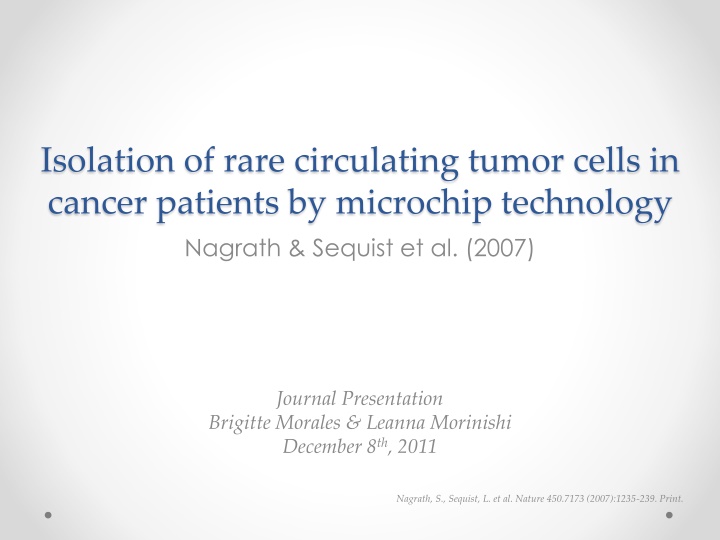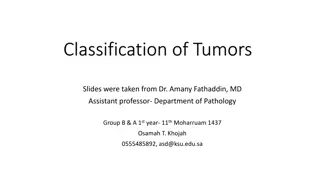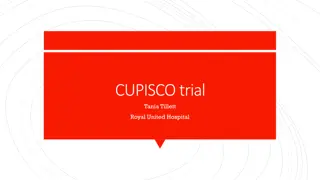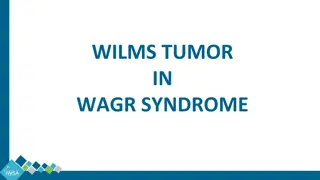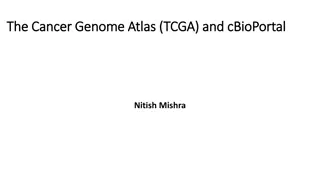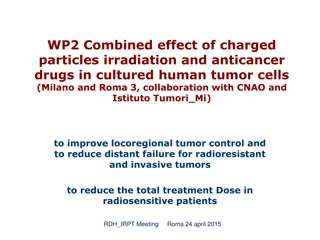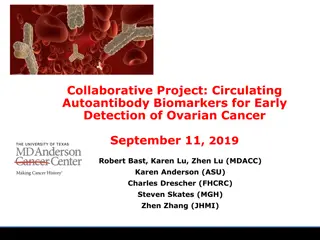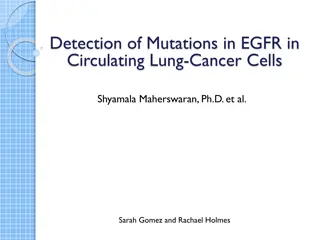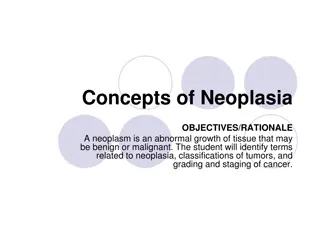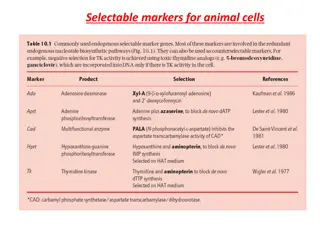Isolation of rare circulating tumor cells in cancer patients by microchip technology
Using microchip technology, Nagrath, Sequist, et al. (2007) introduced a method to isolate rare circulating tumor cells in cancer patients. This advancement in cancer research aims to avoid invasive biopsies, study metastasis, and enhance cancer marker analysis. By optimizing micro-post placement and flow velocity, the system efficiently captures circulating tumor cells expressing EpCAM without pre-processing blood samples. This innovative approach shows promising results in cancer cell isolation for further study and potential clinical applications.
Download Presentation

Please find below an Image/Link to download the presentation.
The content on the website is provided AS IS for your information and personal use only. It may not be sold, licensed, or shared on other websites without obtaining consent from the author.If you encounter any issues during the download, it is possible that the publisher has removed the file from their server.
You are allowed to download the files provided on this website for personal or commercial use, subject to the condition that they are used lawfully. All files are the property of their respective owners.
The content on the website is provided AS IS for your information and personal use only. It may not be sold, licensed, or shared on other websites without obtaining consent from the author.
E N D
Presentation Transcript
Isolation of rare circulating tumor cells in cancer patients by microchip technology Nagrath & Sequist et al. (2007) Journal Presentation Brigitte Morales & Leanna Morinishi December 8th, 2011 Nagrath, S., Sequist, L. et al. Nature 450.7173 (2007):1235-239. Print.
Circulating Tumor Cells Viable cancer cells detached from the primary tumor and circulating through bloodstream May seed additional tumors (metastasis) Very rare (1 in 109) http://cdn2- b.examiner.com/sites/default/files/styles/large/hash/df/20/df20e5 2fb60caa56c75fbf5463efb422.jpg
Previous research CTC studies potential in cancer research o Circumvent invasive biopsies o Further cancer marker studies o Study metastasis Previous methods of CTC isolation o Requires pre-processing of blood o Identification after fixed cells o Poor yield and purity
Microchip for high-quality isolation http://www.aacc.org/publications/cln/2008/november/PublishingImages/Nov08SeriesImage.jpg
Design considerations Micro-post placement maximizes probability of contact Optimize flow velocity Minimize shear force
CTC capture Cancer cells of interest overexpress EpCAM Haematologic cells do not Coated microposts with anti-EpCAM antibodies capture CTCs Non-specifically bound cells are washed out after initial flow http://www.aacc.org/publications/cln/2008/november/PublishingImag es/Nov08SeriesImage.jpg
Controls Non-small-cell lung cancer cells spiked into buffer o Capture efficiency: 65% 3 cell lines with varying antigen expression o Capture efficiency: >65% Density of antigens/cell doesn t affect the number of cells captured NSCLC cells spiked into whole and lysed blood from healthy donors o CTC-chip doesn t require blood sample pre-processing Examined blood samples from 20 healthy individuals
Visual confirmation CTCs - rhodamine-conjugated anti-cytokeratin Haematologic cells fluorescein-conjugated anti- CD45 antibodies Both DAPI staining for DNA
Major Conclusions Efficient - CTC isolation, high purity and yield Simple - Analyzes whole blood, in one-step Gentle - Isolates viable cells Powerful - Useful for early diagnosis and longitudinal monitoring of cancer Future Potential for expansion into other disease studies
Advances and Significance Improvements o Recovering the live cells o Using this device for capture of other rare cells Post-2007, cited in >400 articles o Span topics from metastasis to lab-on-a-chip As of Oct., antibody-based capture still the purest yield technique
Nagrath, S., Sequist, L., Maheswaran, S., Bell, D., Irimia, D., Ulkus, L., Smith, M., Kwak, E., Digumarthy, S., Muzikansky, A., Ryan, P., Balis, U., Tompkins, R., Haber, D., Toner, M. Isolation of Rare Circulating Tumour Cells in Cancer Patients by Microchip Technology. Nature 450.7173 (2007):1235-239. Print.
